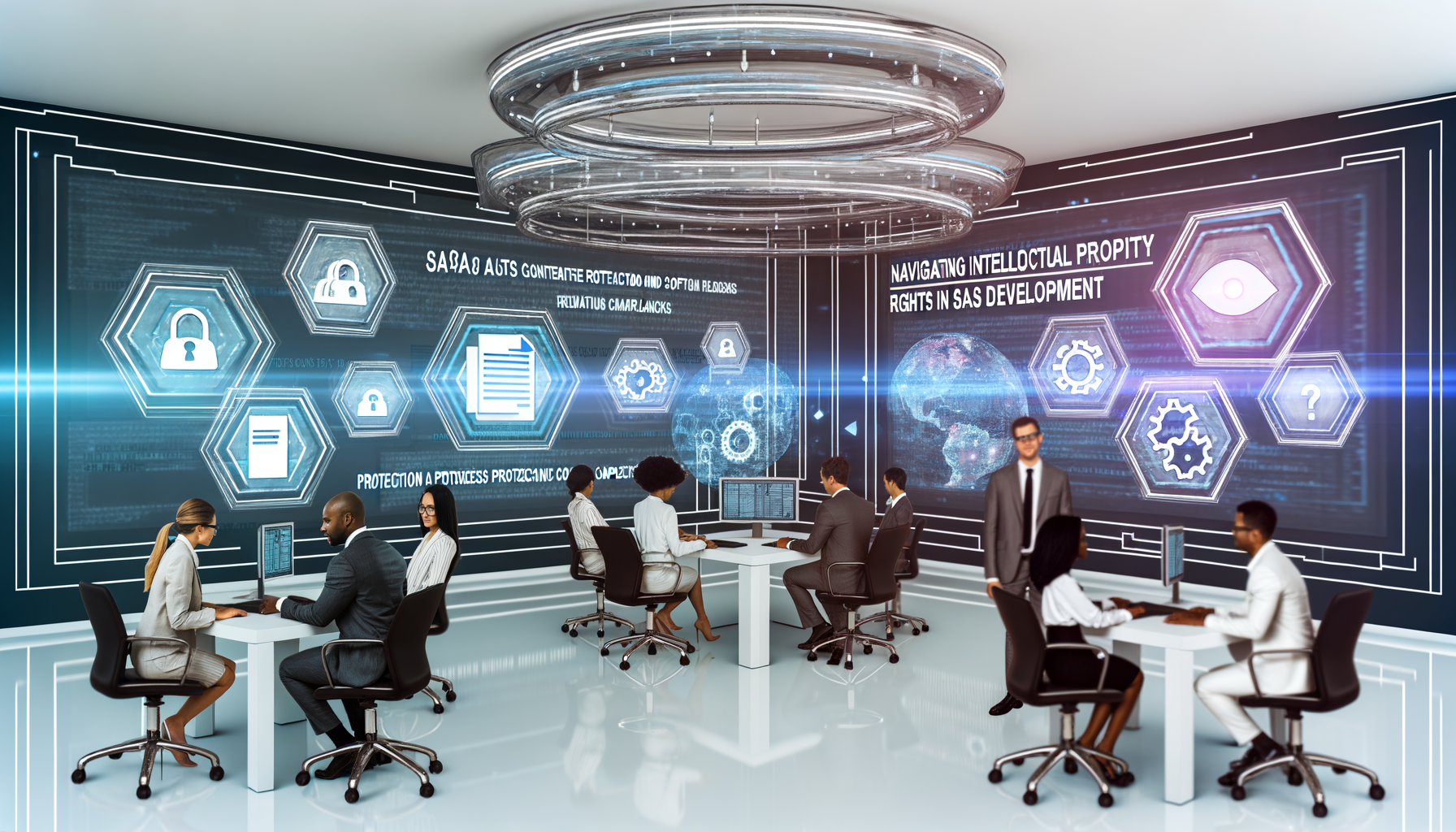
Navigating Intellectual Property Rights in SaaS Development
As I reflect on my journey with tech startups, I’ve realized that the excitement of innovation often overshadows a crucial element—intellectual property (IP) rights. When delving into SaaS development, the proprietary nature of software requires particularly attentive care to legal considerations. Let me share some insights on why IP rights in SaaS are critical, and how I navigate them in this ever-evolving arena.
The Critical Role of Intellectual Property in SaaS Development
SaaS (Software as a Service) development is a booming area, bustling with innovation and competition. In this landscape, intellectual property rights serve as both a shield and a sword. They protect us, the developers, from copycats while enabling us to venture out with confidence as we develop cutting-edge solutions. Without IP protection, unique solutions risk being co-opted without due credit, affecting both revenue and reputation.
Understanding the Types of Intellectual Property
When engaging in SaaS development, there are several forms of intellectual property I focus on:
- Patents: Protect inventions and processes, ensuring exclusive rights to innovative functions or technological advancements.
- Copyrights: Safeguard the expression of ideas, such as the source code of the software.
- Trademarks: Guard the brand identity by protecting logos, slogans, or service marks unique to the SaaS.
- Trade Secrets: Cover confidential business processes or methodologies that give a competitive edge.
In my experience, often it’s a mix of these IP rights that provides comprehensive protection. Choosing the right combination is critical and necessitates strategic foresight.
Navigating Legal Challenges in SaaS Development
It’s not just about registration and documentation. Real challenges emerge when operating across jurisdictions or facing inevitable legal disputes. Here are some strategies I employ:
Compliance with International and Local Laws
The global nature of SaaS means being acutely aware of international IP laws. I’ve seen how adhering to World Intellectual Property Organization (WIPO) guidelines can be beneficial, providing a framework that’s recognized internationally. Understanding nuances of local copyright laws, especially in key markets, ensures compliance and aids in avoiding legal entanglements.
Proactive Legal Advice and Strategy
In my early days, underestimating the importance of legal advice was a pitfall. Secure a knowledgeable IP attorney from the onset. They assist not just with registrations but also with crafting licensing agreements and handling any litigation that may arise. An attorney is not a just-in-case service; in IP law, they are your daily allies.
Best Practices for Protecting Intellectual Property
Robust IP defense is a cornerstone of sustainable SaaS growth. Here’s what I do to keep the intellectual properties of my SaaS ventures secure:
- Regular Audits: Conduct regular IP audits to ensure all potential rights are registered and enforced. These audits help in assessing whether any existing right needs adjustment or additional protection.
- Employee Contracts: Include IP clauses in employment contracts to ensure that ownership of software and related developments is clarified from the outset.
- Use of NDAs: Non-disclosure Agreements with partners and freelancers can provide peace of mind that trade secrets and confidential information remain so.
- IP Education: Foster a culture of IP awareness among team members. Understanding the value and protection of intellectual property makes it a part of the organizational ethos.
Leveraging IP for Business Growth
Once adequately protected, IP can be a powerful tool in business growth. Licensing IP for royalties yields a potential revenue stream, while strategic IP partnerships or alliances can enhance market reach and innovation. In my ventures, leveraging IP has often been the catalyst to enter new markets or attract investors, seeking assurance of proprietary and protected tech solutions.
Conclusion: The Call to Action
Reflecting upon my experience, safeguarding intellectual property in SaaS development is a journey worth embarking on with caution and knowledge. It’s about more than legal compliance; it’s a fundamental pillar of successful entrepreneurship in tech. As you venture into this space, I urge you to weave IP considerations deeply into your strategic planning. Follow my journey for more insights and stay ahead in the rapidly evolving world of SaaS.
